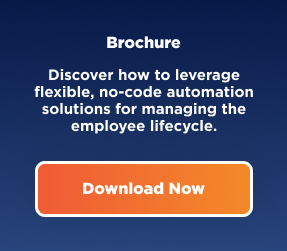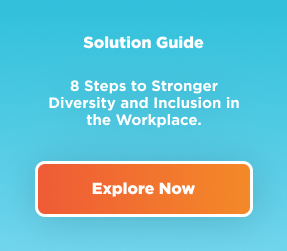The top 5 HR trends shaping the future of work.
As we step into 2023, HR leaders are faced with the challenge of staying ahead of the curve in an ever-evolving workforce landscape. In the past 3 years, we’ve navigated a multi-year pandemic, economic recession, the great resignation, and mass layoffs. As a result, HR professionals everywhere are asking the same million-dollar question:
How do we identify, attract, hire, and retain the best talent in this climate?
To help you stay ahead of the game and answer that question, here are the top 5 HR trends that leaders need to keep in mind for the rest of 2023 and beyond:
1. Remote Work is Here to Stay:
Remote and hybrid work is our new normal, so now more than ever, HR leaders need to ensure that their distributed teams are well-equipped, supported, and engaged. It’s important to provide employees with the necessary tools and resources to work effectively from home and maintain a positive work-life balance — but as we all know by now, remote work has proven to be a double-edged sword.
From the beneficial perspective, employees across industries report seeing an increase in productivity and an improvement in their mental health as they now feel empowered to set positive work-life boundaries. Employers also now have access to a diverse pool of talent that isn’t limited by geography and report higher retention of remote work employees, which results in cost savings as it minimizes churn and loss of productivity.
On the other hand, HR professionals and other leaders face the challenges of managing a remote work environment. Leading the charge in culture maintenance in a remote setting means relying on team leads and employees to continually buy in. Without constant facetime, a collaborative and healthy culture is hard to maintain. Another potential pitfall is compliance risks. Policies rapidly change regarding new hire onboarding — across all regions where you may have remote employees.
So, where do we go from here? Flex Jobs published a report stating that 64% of respondents want to work remotely full-time, and 32% would prefer a hybrid environment, meaning that 97% of their total respondents want some form of a flexible work environment. So, despite where you fall on the matter, there’s no question that remote work is at the forefront of your employee’s minds.
2. Artificial Intelligence (AI) and Process Automation Are on the Rise:
AI and process automation are rapidly changing the HR trend landscape, streamlining processes, and improving efficiency. HR leaders must be proactive in understanding and adopting AI and automation tools to stay ahead of the competition and drive HR innovation.
For the overwhelmed HR professional, this focus makes sense. Mitratech is privileged to co-innovate with some of the largest global brands, here’s why they pursued AI & process automation:
- Lack of visibility and siloed data make organization-wide communication difficult.
- Too many manual requests and reminders for notices to be acknowledged.
- HR-based audits make getting the right information to the right place difficult.
- Manual oversight and processes keep teams in the weeds and out of high-level,strategic decisions.
For many in the same situation, AI and process automation empowered every level of their organization with self-service efficiency, saving them time. We expect to see significant investment in the broader market & internally here at Mitratech within our own Workflow Automation Solution.
Internally, our own HR team has reported significant success. Anna Faber, HR Manager – Americas, stated:
“[Process Automation] helps us with better tracking, reporting, and the overall experience for all parties involved. Additionally, by automating many of the laborious HR processes, it allows the HR team to have more time to focus on business strategies, enhancing the employee experience and much more!”
If you’d like to explore more on this topic, you can read about it in depth in our brochure – HR and Business Process Automation for the Employee Lifecycle.
3. Diversity, Equity, and Inclusion (DE&I) Takes Center Stage:
Within DE&I exists an entire business strategy that results in higher employee satisfaction, better workplace well-being, improved retention, more innovation, and even more revenue. But to achieve these results, HR leaders must create and implement strategies to promote diversity, equity, and inclusion in the workplace, taking an active role in creating a safe and inclusive work environment for all employees.
Your current employees recognize the need and importance of DE&I. According to CNBC & SurveyMonkey, 80% of employees want to work for a company that prioritizes diversity, equity, and inclusion. It’s not just current employees, either; your applicants are growing increasingly interested in your DE&I strategy. SHRM reported that nearly 40% of today’s applicants have turned an offer down or decided to stop pursuing an opportunity due to a perceived lack of diversity.
With more Millennials and Gen Z entering the workforce by the day, this must be top of mind. But if you don’t know where to begin, we’ve got you covered. Here’s a breakdown of the steps needed to begin strengthening diversity & inclusion in the workplace today.
4. Everyone is Focusing in on Employee Well-Being:
Over the past several years, employee well-being has been a top priority, and we can expect that HR trend to continue in 2023. Your employees’ mental and physical well-being directly affects their productivity and engagement, and more often than not, they’re looking for more support, better work-life balance, more recognition, and a healthier workplace culture.
The stats support these sentiments:
- 87% of employees consider wellness offerings when choosing an employer.
- 84% of employers report higher productivity in employees that participate in wellness programs.
- 72% of employers reported a reduction in healthcare costs due to implementing their wellness programs.
- 74% of employees say they would work harder if their employer was empathetic.
HR leaders must continue to invest in comprehensive wellness programs that address physical, mental, and emotional health, and promote work-life balance if they want to remain competitive in the battle for talent.
5. Upskilling and Reskilling Are All the Rage:
A company’s most valuable asset is its people, and with rapid technological advancements and changing job demands, upskilling and reskilling employees will be critical for organizations to stay competitive in 2023 – especially in the age of “doing more with less.”
After surveying over 1,300 employees and HR executives, a Deloitte report covering skill-based organizations found that 89% of executives attribute more importance to skills in defining work to be done and career paths for their employees. In the same report, employees stated they have higher work satisfaction, see more career progression, and are more likely to pursue innovative ideas.
But this isn’t a shift that happens overnight; it takes significant effort and a continuous commitment to invest in your current employees. Bob Moritz, Chairman of the PwC Network, said it best:
“Companies don’t have much control over the broad demographic trends that make attracting and retaining talent difficult. But they can take action to upskill their employees. Those that do so will solidify long-term relationships with employees while building a more agile workforce.”




